Gingivitis, an inflammatory disease of the gums, is common in cats. Most cats over three years old have some degree of gingivitis and associated dental disease due to dietary influences, diseases, or physical abnormalities. Short-nosed breeds like Persians are more susceptible to gingivitis due to oral malalignment. Gum inflammation can cause severe discomfort and, if untreated, can lead to tooth loss, bone infection, and bacteria entering the bloodstream through diseased oral tissues. A systemic bacterial infection can damage other organs in a cat's body. Both preventative and acute treatment measures can help reduce the risks associated with gingivitis and support your cat's overall health as well.
What Is Gingivitis?
Gingivitis refers to inflammation of the gingiva, which is the gum surrounding the tooth. Gingivitis can be mild to severe. Mild gingivitis is very common in cats of all breeds and ages and is considered the earliest stage of periodontal disease. Over time, plaque accumulates on the teeth, and the gums become more inflamed. Gum recession may begin at this stage. If left untreated, gingivitis will worsen and become severe. In severe cases, cats can have difficulty eating due to the pain, and a dental cleaning under anesthesia will be required to prevent further discomfort and damage.
Symptoms of Gingivitis in Cats
The symptoms of gingivitis are mostly associated with a cat's mouth. In more severe cases, signs of illness may be observed in the cat's physical and behavioral conditions.
The first signs of gingivitis in cats will be bad breath and gum inflammation, which means the gums will appear red or swollen. Drooling is a possible indication of oral discomfort but can be caused by other conditions, so it is not a definitive symptom of gingivitis by itself.
A cat with sore gums or an associated tooth infection will either refuse food or show difficulty in chewing. It may spit food out or appear to chew on only one side of its mouth. Of course, if a cat stops eating, it will lose weight and suffer nutritionally. Weight loss, as well as behavioral changes, can be associated with other health conditions and should be evaluated by a veterinarian.
What Causes Gingivitis in Cats?
The most common cause of gingivitis in cats is a build-up of plaque and bacteria. Other predisposing factors include:
- Infectious or systemic diseases, including feline leukemia virus, feline immunodeficiency virus, feline calicivirus, and autoimmune diseases
- Lack of dental care
- Genetics (some cats are probably genetically more predisposed to developing dental disease than others)
- Malaligned teeth, which accumulate plaque and tartar more than those that are correctly positioned
Reasons for malalignment can include:
- Oral malalignment: Very short-nosed breeds like (Persians, Chinchillas, and British or Exotic Shorthairs) commonly have abnormally positioned teeth. Their jawbones are often too small to accommodate the teeth, resulting in overcrowding and misalignment.
- Deciduous tooth retention: In some cats, deciduous teeth (baby teeth) can be retained after the permanent teeth have erupted, causing crowding.
- Trauma or congenital abnormalities
How Do Vets Diagnose Gingivitis in Cats?
As a cat owner, you will probably be the first to notice problems with your cat's oral health. If you notice any of the possible symptoms of gingivitis, make an appointment with your veterinarian. A simple oral exam will reveal the presence of gingivitis to your doctor's trained eye. If there is only minor redness or inflammation, no further diagnostic testing may be required. However, if your vet suspects an infection or deeper damage within the oral cavity, then x-rays may be needed to assess the extent of the disease.
How to Treat Gingivitis
Treatment of gingivitis involves removing accumulated plaque and dental calculus, then extracting loose or infected teeth to prevent further disease progression. Regular dental care and medical management are typically the first lines of treatment. A routine dental cleaning and dental x-rays should be performed under anesthesia to address any inflammatory dental disease, remove plaque and tartar, and clean the tissues beneath the gum line. Severe cases of gingivitis may require antibiotic medication as well as surgery to extract teeth or repair damaged tissue.
Ideally, cats’ teeth should be brushed regularly after the dental cleaning. However, cats with stomatitis (another oral inflammatory condition) may not tolerate brushing due to pain. Cats with stomatitis often have their teeth removed by a veterinarian to relieve discomfort.
If your cat's gingivitis is caused by an underlying systemic disease, then that condition will need to be evaluated by your veterinarian to determine the appropriate course of treatment in addition to gingivitis.
While this disease is not contagious, the factors precipitating gingivitis in one cat are likely affecting other cats in the household, so all cats should be examined.
Prognosis for Cats with Gingivitis
If caught early and treated promptly with appropriate dental care, the prognosis for a cat with gingivitis is excellent. You will need to continue to schedule regular checkups and dental cleanings with your vet to help maintain your cat's oral health. Severe gingivitis that requires antibiotics or surgery can make it more difficult for your cat to recover quickly, but with attentive home care, your cat's mouth can heal over time.
How to Prevent Gingivitis
The most effective ways to prevent gingivitis are to establish a daily dental care routine (including tooth brushing), feed an appropriate diet, and schedule annual veterinary visits and dental cleanings as recommended. Introduce the concept of tooth brushing slowly and always use toothbrushes and toothpaste specifically designed for cats. Cat toothpaste, for example, has been formulated to be palatable. It doesn’t foam or need to be rinsed, and it doesn’t contain fluoride, which is toxic to cats.
Tooth Brushing
Cats generally don't like contact with their mouths, and they won't readily accept tooth brushing. To make the process easier, try these steps:
- Find a flavor of cat toothpaste your cat enjoys. Place a small amount of toothpaste on your finger or in your cat's bowl and see if your cat will lick the toothpaste.
- Slowly and gently rub your cat’s teeth and gums with your finger, and reward with a treat immediately after. You can then gradually switch to toothpaste and reward after.
- Put some toothpaste onto the brush and have the cat lick it off, then reward with a treat.
- When your cat is comfortable with the toothbrush, toothpaste, and you touching its mouth, try brushing its teeth. Don't force the issue—a little brushing is better than none, and you only need to brush the outside of the teeth. If possible, gently brush your cats’ teeth along the gum line for 15 to 30 seconds on each side. Reward with a treat each time.
Remember to go at a pace your cat is comfortable with, be patient, and keep it positive!

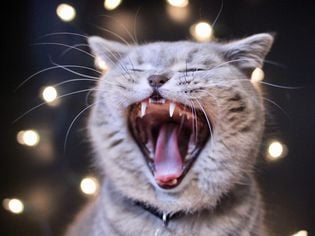
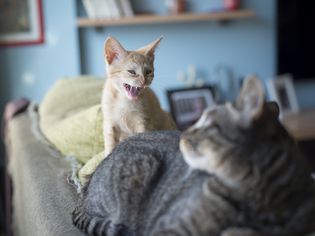
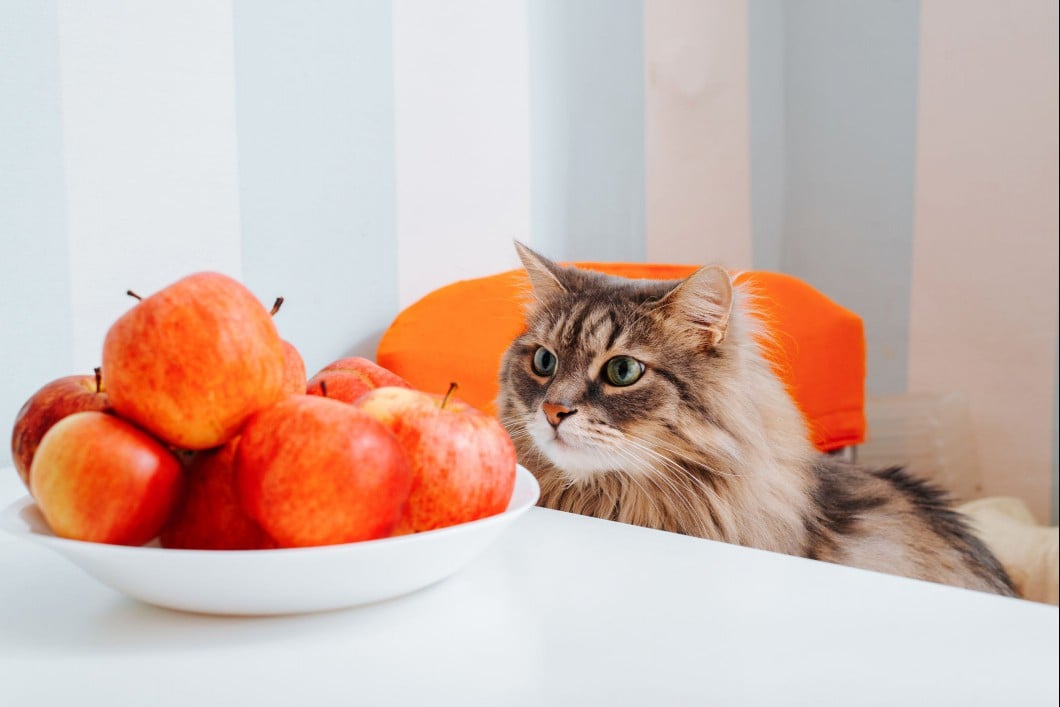
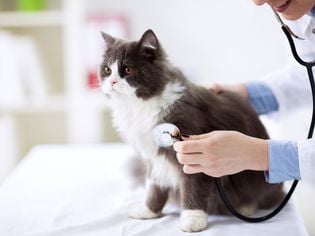
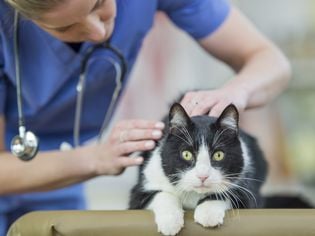
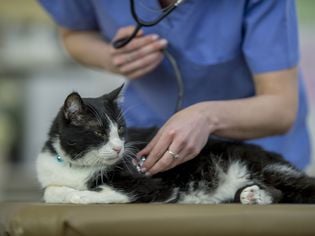

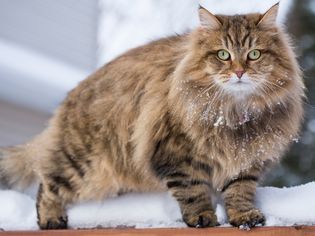
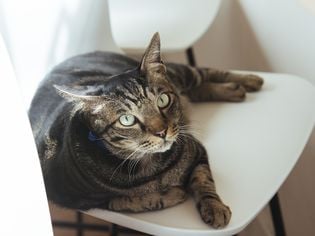
Comments on " Gingivitis in Cats" :